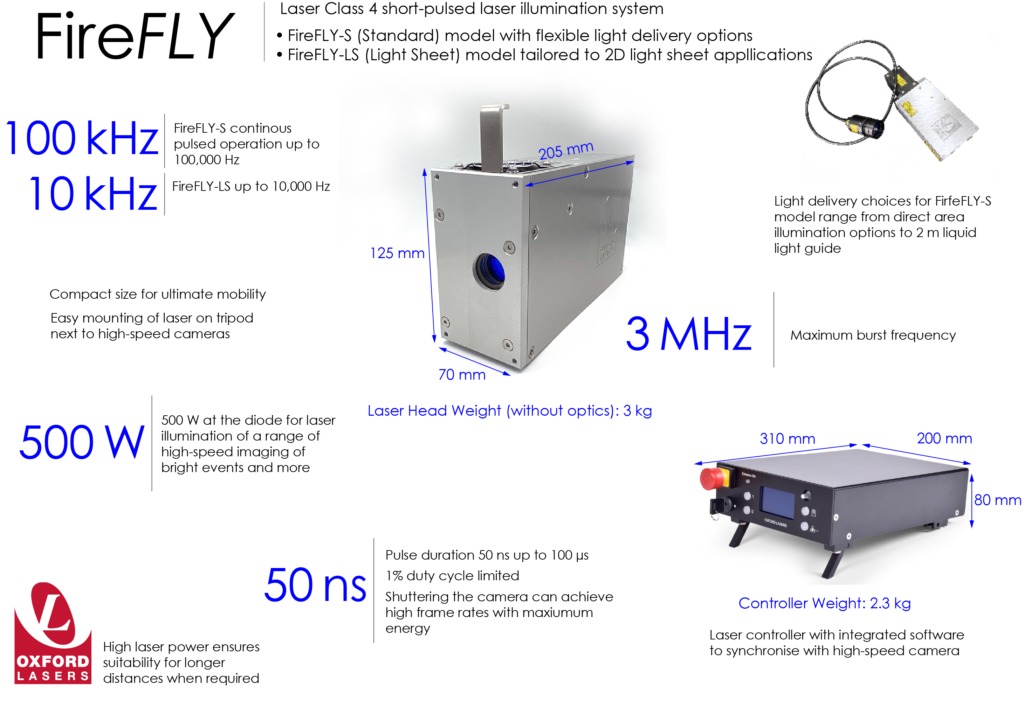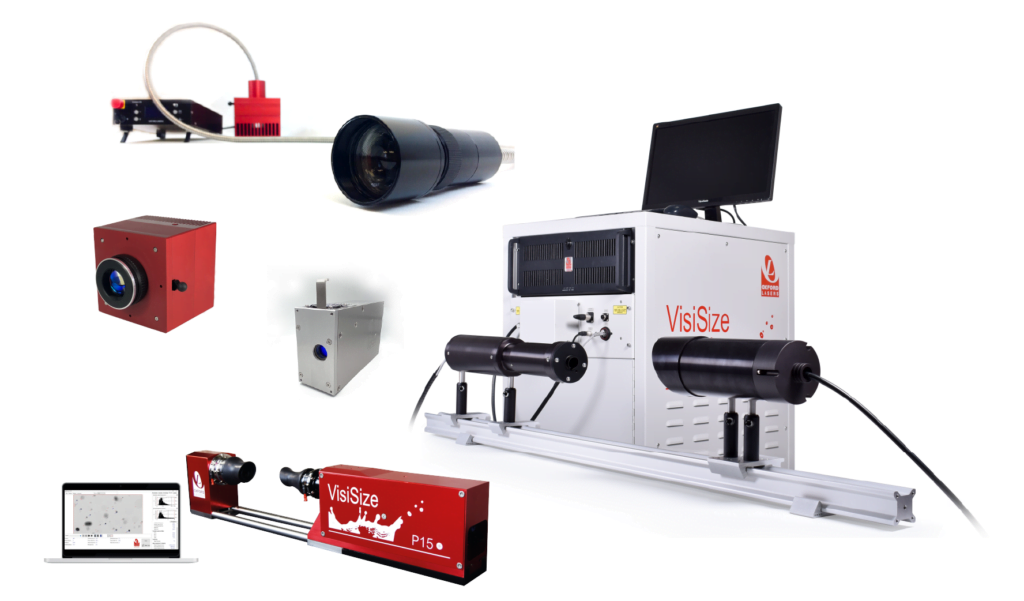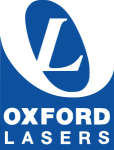Visualisation of Laser Cladding
Challenges and solution for imaging of additive manufacturing processes
Laser Cladding Visualisation
Oxford Lasers illumination sources enable users to see and monitor laser cladding processes. Laser cladding also known as Laser Metal Deposition (LMD) is an additive manufacturing method that fuses a metal alloy in powder form to the surface of turbine blades, engine parts, etc. to improve wear, corrosion resistance or thermal stability. It was first developed in the late 1970’s. However, due to the high cost of laser systems and supporting sub-systems it did not find adoption until recently as laser/equipment costs, along with process improvements have made laser cladding a viable industrial process. In fact, over the next few years it will become a $1 billion dollar industry with a compound annual growth rate (CAGR) expected to approach 10%.
Seeing the Process
Image of the laser cladding process using the FireBIRD laser for illumination. Individual particles of the powdered metal can be seen travelling from the nozzle exit to the substrate. At the end, when the process laser is turned off particles can be seen to bounce off the substrate; yet when the laser remains on the particles show clear adherence to the substrate. Video credit: TWI and Vision Research.
How Does Laser Cladding Work?
Typically in the process, the user is coating a large part that is moving rapidly with a static nozzle that is coating the surface with powered metal. The powdered material is applied to a spot of <1 mm in diameter to the substrate to be coated. A fiber, C02 or Nd:YAG laser is focused into the powdered surface to melt and fuse the coating to the part. It is similar to laser welding except the depth of penetration is quite shallow – just enough to ensure a strong metallurgical bond of the alloy coating to the part.
Benefits of Laser Cladding
- Surface hardening for increased wear resistance and durability
- Oxidation and corrosion resistance
- Reduced weight
- Lower manufacturing costs
- Thermal stability and high-temperature operation
- Improved mechanical properties
- Biocompatibility for human implantable devices
Importance of Particle Size and Impact Dynamics for Laser Cladding
Determination of the best particle size, size uniformity and velocity all play a crucial role in the quality of the coating process. For instance, large particle sizes may not properly melt and may not firmly fuse to the substrate; too fine a particle size may increase the porosity of the coating. Particle uniformity improves surface smoothness hence requiring less post processing. Furthermore, uniformity ensures proper laser absorption of the melt pool which improves consistency of the coating process and layer thickness control. But, how can you analyse the dynamics of your laser cladding process to ensure uniformity?
The Challenge
The difficultly in observing the laser cladding process, similar to laser welding or ballistics studies, is the high brightness of the process itself which prevents visualisation or imaging the area of interest at the surface level. Oxford Lasers has the solution by utilising laser illumination to enable detailed imaging of the process.

The Answer, Oxford Lasers' High Brightness Laser Imaging Systems
Using a high-power laser such as the FireBIRD or FireFLY, we are able to provide an illumination source which is brighter than the fireball masking the melt pool at the substrate’s surface. Our lasers synchronise with any monochrome high-speed camera and can either be triggered internally or externally. These illumination systems emit a single wavelength at nominally 808nm. A narrow bandpass filter is placed in front of the camera lens. The laser line filter provides maximum transmission at the illuminating wavelength of 808nm and blocks the broadband light from the fireball. The result is a crisp, clear, and blur-free image of the surface.

Oxford Lasers’ FireBIRD 1000 W laser illumination system

Oxford Lasers’ FireFLY 500 W laser illumination system
The powerful imaging tool can also be used as a high-performance analytical system by using Oxford Lasers VisiSize software. This image analysis platform can measure particle size, size distribution and velocity. Some of the statistics reported include: Mean diameter (by number, area or volume), Sauter mean diameter, volume percentiles (10%, 50%, 90%), deviation, relative span, among other parameters.
The FireBIRD and FireFLY lasers enable us to see through the fireball of high brightness events, to support the measurement of particles or droplet size and velocity and to visualise ultra-fast intermittent events up to Mach 7, significantly enhancing the quality of high-speed imaging. We provide the ability to see the process and its effects on consistency and therefore allow for optimisation.


Applications, Techniques and Products
- Additive manufacturing such as laser cladding
- Bright and energetic events including welding and ballistics
- General high-speed imaging (both front and back illumination)
- Flow visualisation and fluid mechanics e.g., Schlieren and PIV (particle image velocimetry)

Advanced Imaging Products and Services
Oxford Lasers is ready to provide our customers with a range of options to ensure high-quality imaging solutions.
Advanced high-speed laser illumination: FireBIRD & FireFLY
Our high-performance laser-based illumination technology enables you to see what was previously hidden. With maximum power at a single wavelength (808 nm), the short-pulsed illumination from our lasers give you the ability to capture high-quality images of fast-moving particles without blur. Read about our illumination systems. We also provide laser illumination and high-speed imaging contract services and rentals.
Image-based measurement systems: VisiSize Range
For droplet and particle characterisation, Oxford Lasers has designed image-based VisiSize products. We provide real-time information on fast-moving particles and droplets over a range of requirements. Read more about our VisiSize systems. We also provide customers particle sizing contract services and rentals.
